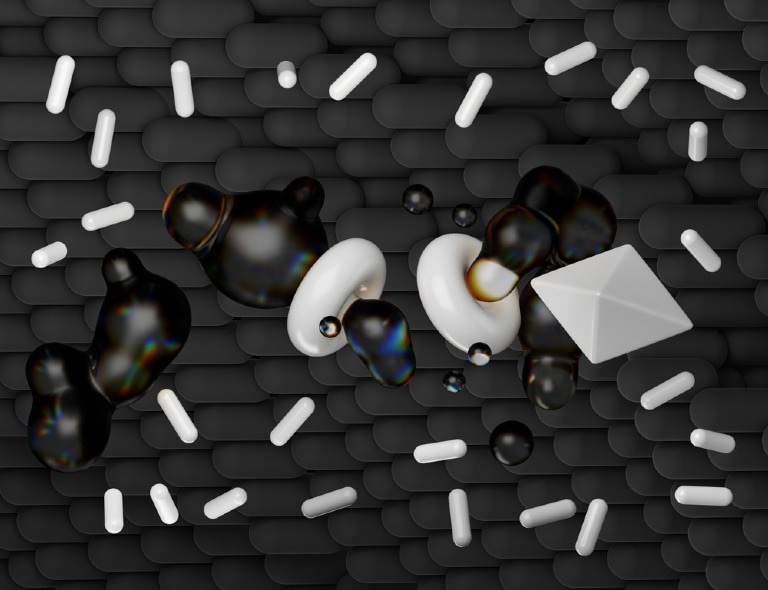In a paper recently published in the Journal of Pharmaceutical Sciences, researchers reported a method to determine the miscibility of amorphous solid dispersions (ASDs) based on the overlap concentration (c*). The results indicated a promising implementation of the c* method for designing stable ASD formulations.

Study: A Rheological Approach for Predicting Physical Stability of Amorphous Solid Dispersions. Image Credit: Bug_Fish/Shutterstock.com
Background
Recently, amorphous forms of small molecule drugs have gathered considerable attention due to their solubility. Amorphous drugs, however, are thermodynamically unstable and tend to alter to their crystalline counterparts. To improve their physical stability, amorphous drugs are molecularly dispersed in a polymer.
A miscible ASD is a single homogenous phase with distinct physical properties from those with pure components. As it is generally believed that miscibility can be a major predictor of crystallization resistance during the synthesis of a drug as an ASD, numerous experimental approaches have been used to explore it by determining heterogeneous phases surpassing the critical drug concentrations. Other techniques to determine the ASDs’ miscibility include solid-state nuclear magnetic resonance, Fourier-transform infrared (FTIR), polarized light microscopy (PLM), and other combinations. These methods, while useful, can only offer qualitative data on the miscibility of the drug-polymer and are not commonly accessible or applicable for everyday use.
In addition to experimental procedures, the Flory-Huggins theory based on the mean field assumption is the most widely used theoretical approach for determining miscibility. The polymer serves as a drug solvent in this theory, and the amorphous solubility determines the limit of the drug’s miscibility in the polymer. However, this theory works best at sufficiently high polymer concentrations and neglected fluctuations.
About the Study
In this study, the team demonstrated the principles of the c* technique using two model drugs, loratadine (LOR) and celecoxib (CEL), which are poorly water-soluble, and four grades of polyvinylpyrrolidone (PVP). They determined that ASDs synthesized with polymer concentrations greater than c* maintain their physical stability at ambient temperatures for extended periods.
About 20 mg of the received crystalline powders were heated at 165 °C to yield pure amorphous LOR and CEL. Liquid nitrogen was used to quench the drug melts. Furthermore, a 5 mg/ml solution containing 0.05M LiBr was prepared for each PVP sample. A rheometer was used to measure the zero-shear-rate viscosity of the drug/polymer and pure drug melts. An X-ray diffractometer was used to generate X-ray powder diffractograms of LOR/PVP ASDs at 60 °C and CEL/PVP ASDs at 70 °C.
Observations
The proton nuclear magnetic resonance (1H-NMR) spectra observed for the melt-quenched LOR and CEL were identical to those of the as-received powders, indicating that the LOR and CEL were chemically stable during the quenching of the melts. Delineating the trend of drug crystals' melting point depression in the presence of PVP additive at consistent heating rates for all samples indicated that LOR and CEL were effective high-temperature solvents for PVP, although no substantial hydrogen bonding was witnessed in the FTIR spectra for both LOR/PVP and CEL/PVP ASDs.
Furthermore, for the study at variable temperatures, the initiation of crystallization of CEL was at 95°C for ASDs containing 10% and 5% polymer that were under c*. Crystallization began at 115°C at 20% polymer loading, a little over c*. Since the samples were held overnight under ambient conditions, the minor crystallization for ASDs at 20% polymer loading at 115°C could be attributed to the PVP's hygroscopicity. However, at 30% polymer loading, there was no crystallization at 115°C.
Moreover, an identical difference in CEL/PVP ASD above and below its c* was demonstrated during the assessment of isothermal accelerated physical stability at 0% RH and 70°C. The initial evidence of CEL crystallization was observed on day three and day five for ASDs below c* and containing 5% and 10% polymer, respectively. However, no distinctive peaks of CEL crystals were identified with the PVP concentration exceeding c* 20% and 30% by the end of the study (18 days). Furthermore, crystallization occurred at 105 °C after 10 days (20°C higher than that of 10% and 5% LOR ASDs) for the 20% polymer-loaded LOR/PVP ASD, whereas the 30% polymer loading hindered LOR crystallization entirely during the study at 115°C over two weeks.
Conclusions
To summarize, the researchers demonstrated the correlation between ASDs’ miscibility and c*. The study results imply that the viscosity-composition diagram can be used to determine the c* and thereby indicate the physical stability of the ASD against crystallization.
However, since the current model considers ASD as a binary solution, one of the disadvantages of this approach is that moisture absorption is not taken into account. Additionally, the selection of the polymer loading should be marginally higher than c* to take into account the influence of moisture which is unavoidable during production and long-term storage. According to the authors, further research can be conducted to validate the miscibility determination methods with more drug/polymer combinations, as well as to demonstrate its application to ASD synthesis.
More from AZoM: A Closer Look at Semiconductor Test Equipment
Disclaimer: The views expressed here are those of the author expressed in their private capacity and do not necessarily represent the views of AZoM.com Limited T/A AZoNetwork the owner and operator of this website. This disclaimer forms part of the Terms and conditions of use of this website.
Source:
Song, S. et al., A Rheological Approach for Predicting Physical Stability of Amorphous Solid Dispersions, Journal of Pharmaceutical Sciences (2022), doi: https://www.sciencedirect.com/science/article/pii/S0022354922003653